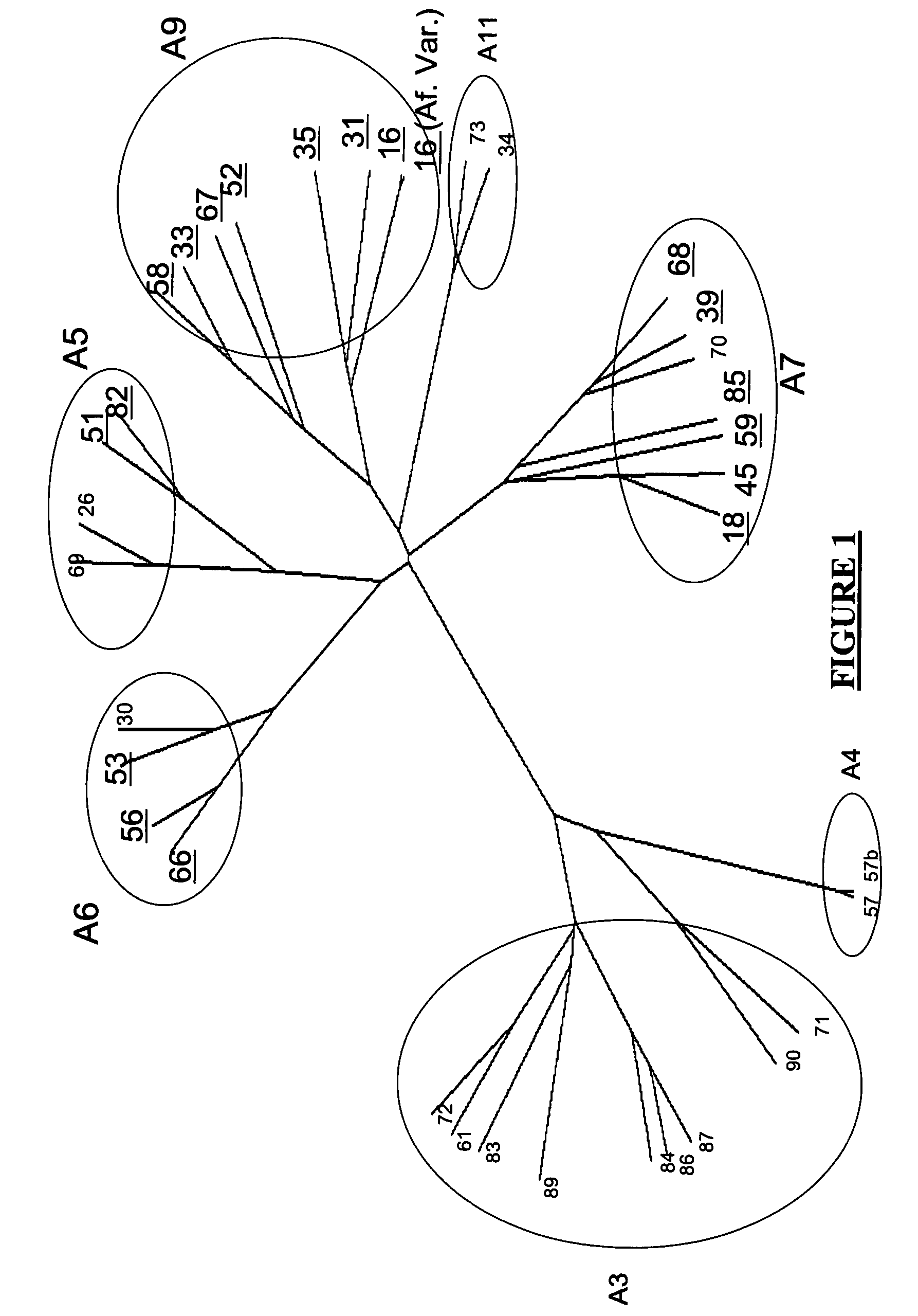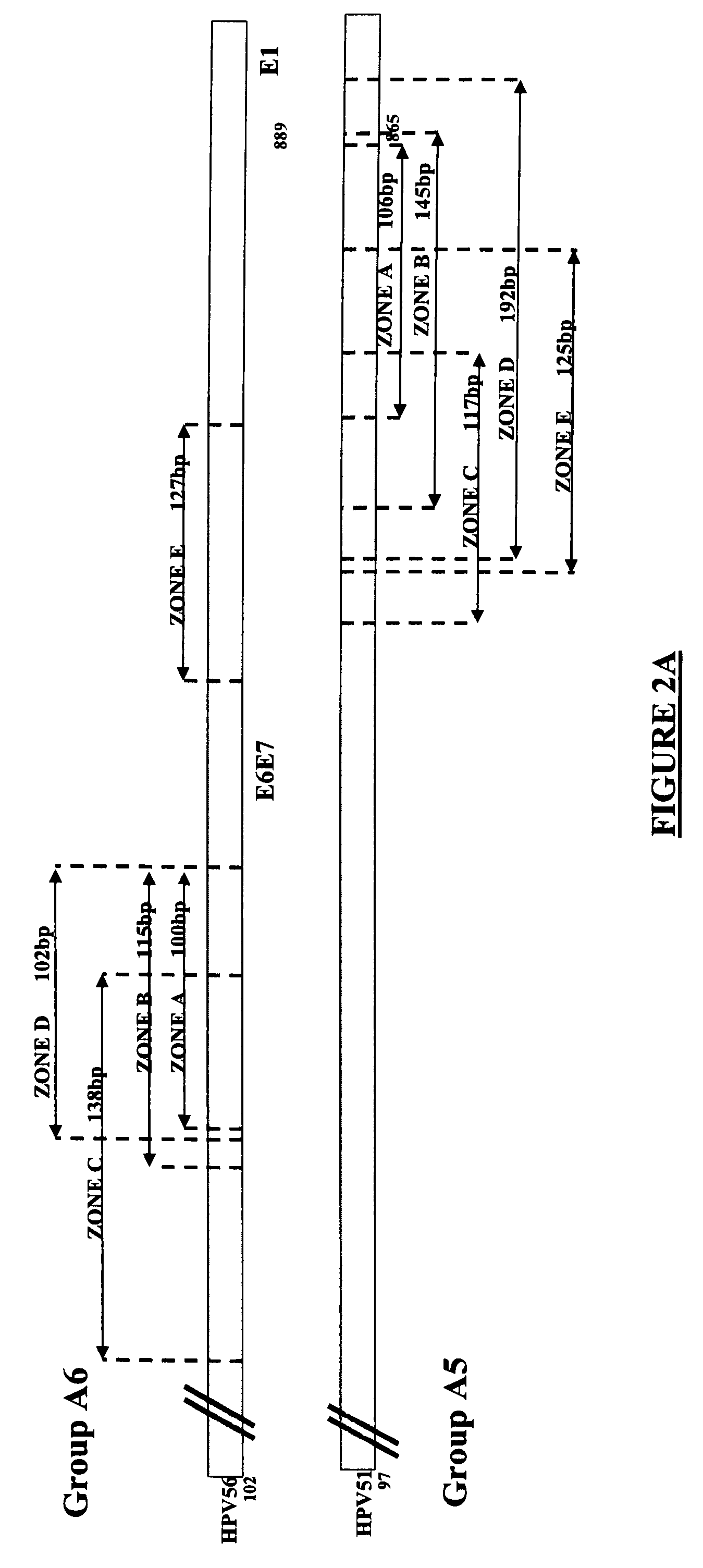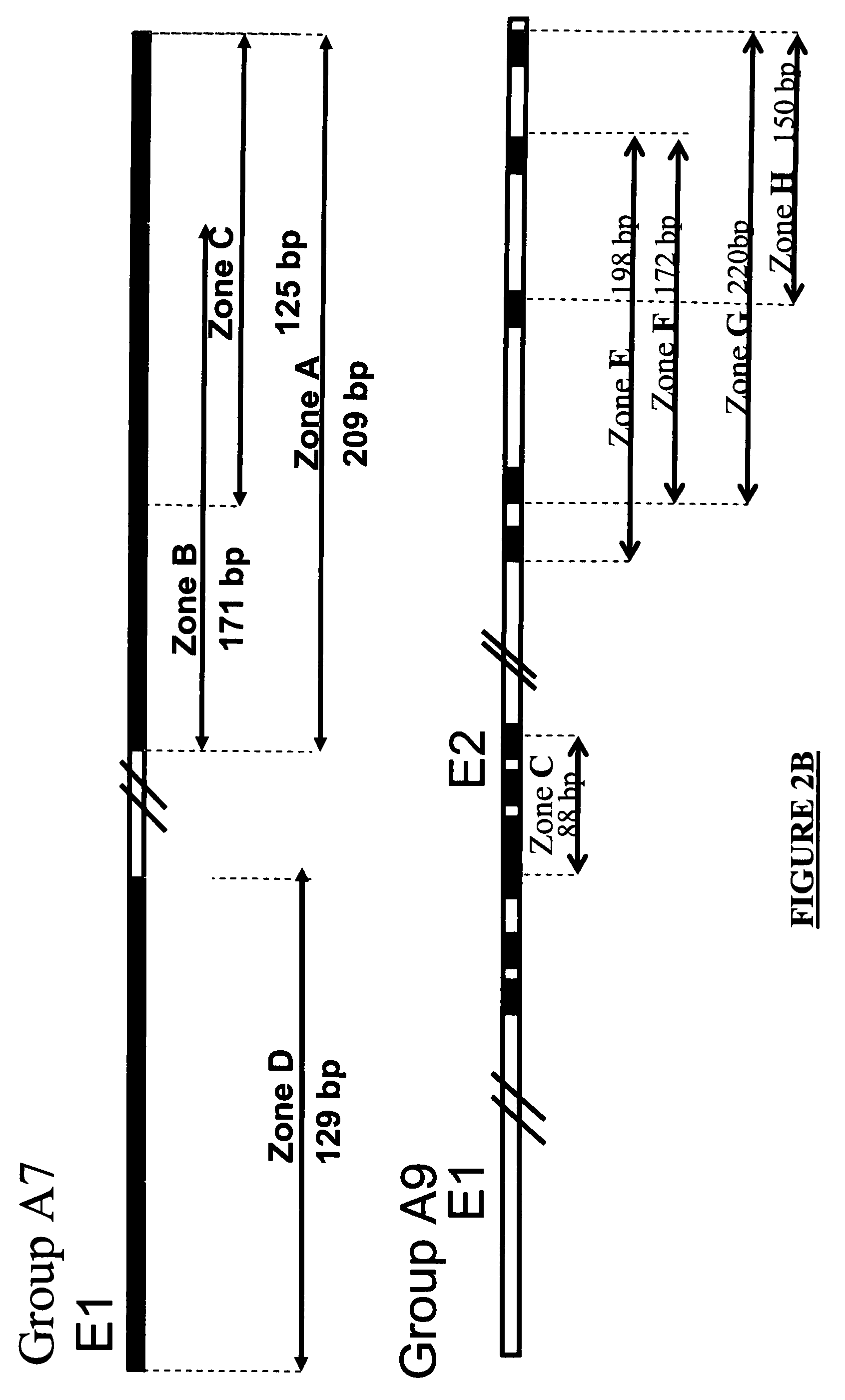HPV detection and quantification by real-time multiplex amplification
a detection and quantification technology, applied in the field of human papillomavirus detection, can solve the problems of increasing the risk of cin3 and cervical carcinoma, difficult to accurately detect hpv, and the viral load assessed by the hc2® test is not increased
- Summary
- Abstract
- Description
- Claims
- Application Information
AI Technical Summary
Benefits of technology
Problems solved by technology
Method used
Image
Examples
Embodiment Construction
[0098]The present invention is based on an approach, which is completely different from, and truly innovative, compared to prior art techniques. The invention overcomes the drawbacks of prior art techniques, and has numerous advantages, notably in terms of clinical applicability, performance, reliance and flexibility.
[0099]As mentioned in “the above background” section, prior art primers are designed either as type-specific primers, or as general consensus primers by classic alignment of as many mucosal HPV sequence as required, or desired, or as possible (e.g., by direct alignment of the 13 HR HPV).
[0100]On the contrary, the primers of the invention have been designed by HPV groups (=HPV genera).
[0101]Indeed, the present inventors analyzed the phylogeny of HPV, and have constructed the resulting phylogenic tree, which is shown in FIG. 1.
[0102]The present inventors selected one HPV sub-family, which is involved in carcinogenesis of the mucosal epithelia, namely sub-family A. They fu...
PUM
| Property | Measurement | Unit |
|---|---|---|
| length | aaaaa | aaaaa |
Abstract
Description
Claims
Application Information
 Login to View More
Login to View More - R&D
- Intellectual Property
- Life Sciences
- Materials
- Tech Scout
- Unparalleled Data Quality
- Higher Quality Content
- 60% Fewer Hallucinations
Browse by: Latest US Patents, China's latest patents, Technical Efficacy Thesaurus, Application Domain, Technology Topic, Popular Technical Reports.
© 2025 PatSnap. All rights reserved.Legal|Privacy policy|Modern Slavery Act Transparency Statement|Sitemap|About US| Contact US: help@patsnap.com



